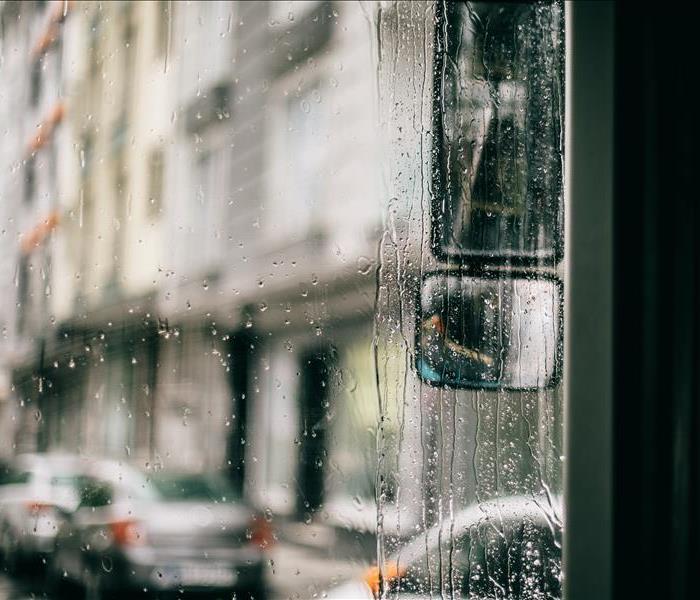Seattle Office Building, Water Removal, and Drying, SERVPRO at Your Speedy Service!
4/11/2022 (Permalink)
Discussing the Use of Dehumidifiers to Respond to Commercial Water Damage in Seattle
When professional crews plan the recovery phases for a significant commercial water loss in Seattle, they rely heavily on the action of dehumidification equipment, especially after pumps and extractors suction up and contain the bulk of liquid water. In general, dehumidifiers lower the relative humidity in an area by removing water vapor from the air. Three main types of dehumidifiers have roles in professional commercial water removal. We choose among the options, sometimes changing the dehumidifier type as conditions evolve.
Refrigerant Dehumidifiers
The most used dehumidifier type used to respond to Seattle commercial water damage works by condensing moisture. Condensation occurs after moist air moves across a cold evaporator coil 20 to 30 degrees below the dewpoint in the affected area. The vapor in the air condenses into water droplets and is then collected for disposal. An adjacent warmer coil then increases the temperature of the dryer air. Then a fan exhausts the warmer, drier air back into your business space. Refrigerant dehumidifiers can reduce humidity to approximately 40 grains per pound (GPP). GPP expresses the weight of water in a given weight of air, here a pound of dry air.
Low Grain Refrigerants (LGR)
SERVPRO® might turn to a humidifier that can reduce relative humidity levels even further in some cases. An LGR dehumidifier cools the air pulled through before exposure to the evaporator coil, permitting moisture measurements to dip below 40 GPP. An LGR provides the most energy-efficient dehumidification. This device is considered a workhorse.
Desiccant Dehumidifiers
SERVPRO’s desiccant dehumidifiers work differently. Moist air entering the process air inlet passes through a silica gel-filled rotor. The gel attracts water, capturing water from the air. Three-quarters of the air pulled through the desiccant dehumidifier exhausts out as warm, dry conditioned air. The dehumidifier heats the remaining quarter of the air to a higher temperature. It is rerouted to the rotor to pick up water vapor to prevent the rotor from saturation. This “reactivated” air pumps out of the dehumidifier, along with the moisture.
Conditions Determine Which Dehumidifier to Use
When the temperatures in your commercial building range between 50 and 95 degrees, SERVPRO most likely will recommend LGR or regular refrigeration dehumidification. If you have unheated spaces, the temperature can dip in our region to less than 50 degrees during the winter. A desiccant dehumidifier continues to remove moisture under those conditions. If structural materials like hardwood flooring are still wet after porous items like drywall or carpeting are dry, desiccant dehumidifiers offer appropriate drying action. They also help out in confined spaces common in commercial buildings.
Rely on SERVPRO of Seattle Northeast to select the most efficient dehumidification equipment after water damage to your business. Call us for a consultation at (206) 362-9295.






 24/7 Emergency Service
24/7 Emergency Service
